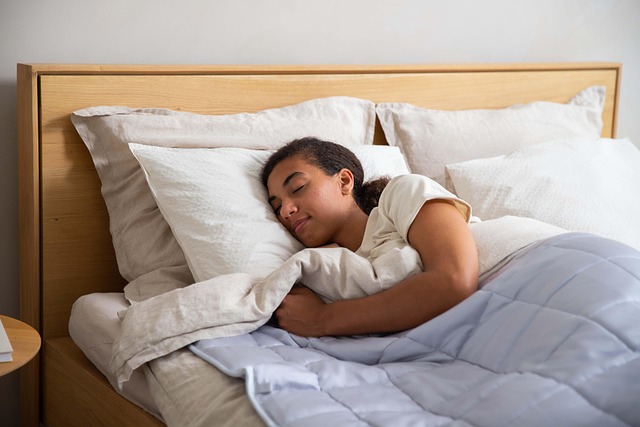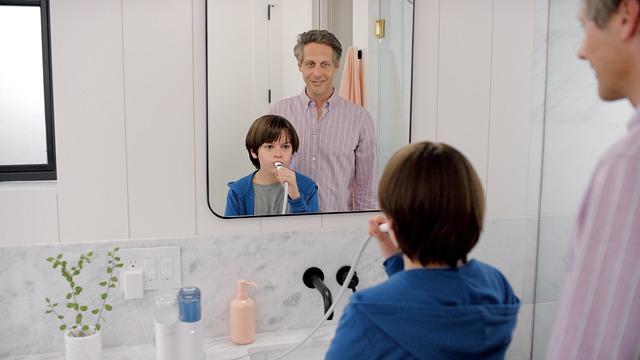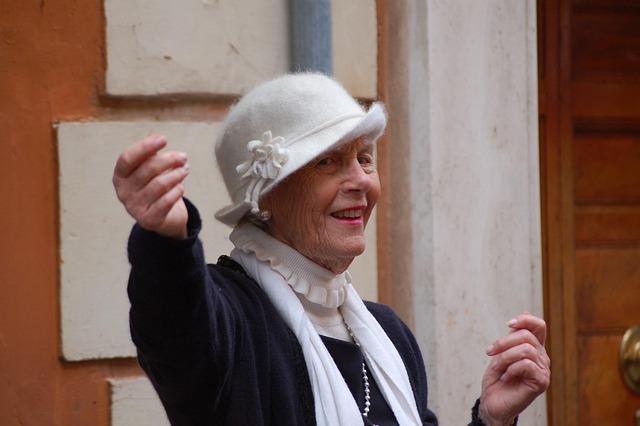Physical Address
304 North Cardinal St.
Dorchester Center, MA 02124
Physical Address
304 North Cardinal St.
Dorchester Center, MA 02124

Waking up before 7 a.m. and staying active for 15 hours each day isn’t just a habit; it’s the secret routine for morning that transforms seniors. Surprisingly, 37.6% of older adults who maintain consistent daily routines show better cognitive performance and overall well-being. After turning 70, I discovered that my retirement routine for morning schedule template wasn’t just helpful; it was essential for maintaining my energy and purpose.
Many of us assume tiredness is inevitable as we age, but that’s simply not true. In fact, how we structure our mornings shapes our entire day, especially after 70.
I’ve experimented with Routine For Morning with various sample daily schedules for retired persons, particularly during the morning hours, learning that a thoughtful retirement routine can transform not just our mornings, but our entire outlook on aging.
In this blog post, you’ll not just discover the routine for morning that transformed my life, you’ll also get enough insights into the best morning routine for health and longevity

Through careful adjustments to my daily schedule for retirees, I’ve found that having something meaningful to wake up for creates both purpose and vitality. Indeed, the simple truth is that a sample daily schedule for elderly individuals isn’t about restriction; it’s more about freedom through structure.
As part of your morning routine for seniors, ensure that those 10 minutes after opening your eyes set the tone for your entire day. According to recent findings, 37% of Americans can predict whether they’ll have a good or bad day within just 10 minutes of waking up.
At 70, I’ve refined my morning routines over the years, and I’ve also discovered that these opening moments are absolutely critical for maintaining energy levels and a positive outlook throughout the day.
I used to be among the 80% of people who check their phones within 15 minutes of waking until I discovered that this seemingly innocent habit dramatically impacted my daily routine for a vibrant life after 70.
When you immediately grab your phone, you force your brain to skip important wake-up stages, jumping directly from deep sleep to high alert. This abrupt transition disrupts your natural awakening process.
Additionally, checking emails or scrolling through social media first thing can:
Instead of reaching for my phone, I now keep it in another room and use a traditional alarm clock. This simple change has significantly improved my morning ritual and morning mindset. These are simple steps to transform your life, too, if you choose to apply them to your healthy aging morning habits.
Starting your day with hydration is a cornerstone of any effective daily routine for morning for people over 70. After hours without fluids during sleep, your body naturally wakes up somewhat dehydrated. Consequently, drinking water first thing can provide numerous benefits.
I keep a glass of water on my bedside table and take slow sips immediately after waking. This simple practice helps activate my body and mind.
Research shows that morning hydration can boost your metabolism by 24-30% for about 60 minutes, which is particularly valuable for seniors who may experience a naturally slowing metabolism.
Furthermore, proper hydration supports joint lubrication, waste removal, and urinary tract health – all increasingly important considerations in my seventies. Morning water also helps dilute stomach acid, potentially reducing heartburn and supporting digestion.
Perhaps the most transformative part of my morning routine for success has been incorporating morning light exposure. Once I’m up and hydrated, I immediately open my blinds to welcome the day.
Morning sunlight exposure within the first 30-60 minutes of waking is crucial for regulating your circadian rhythm. This natural light signals to your brain that it’s time to be awake and alert. Moreover, this exposure triggers the release of serotonin, a hormone that stabilizes mood and contributes to feelings of happiness.
For seniors, particularly, natural light can significantly improve mental health by boosting mood, improving sleep quality, and promoting physical activity. Since implementing this practice in my morning daily schedule for elderly living, I’ve noticed remarkable improvements in my energy levels and overall outlook.

Even on cloudy days, stepping outside or sitting near a window provides substantially more light than indoor lighting, making it more effective for adjusting your body clock. The simple act of arranging my living space to maximize sunlight exposure has become a cornerstone of my daily routine for elderly wellness.
By focusing on these three simple practices – avoiding my phone, drinking water, and seeking morning light – I’ve created a morning foundation that supports my energy and positivity throughout the day, proving that thoughtful structure creates freedom in retirement.
It doesn’t end there.
After stepping out of bed and completing those critical first moments, my body still needs gentle awakening. Physical movement has become the cornerstone of my routine for the morning schedule template, turning what could be stiff, achy mornings into opportunities for renewed energy.
The beauty of morning stretches lies in its simplicity. Even with mobility challenges, I’ve discovered that stretching supports independent living and helps me move comfortably throughout the day.
I begin with seated stretches right on my bed or in a chair. My routine includes:
These seated exercises have transformed my morning routine by increasing control and flexibility while strengthening muscles and joints. For standing stretches, I hold onto a stable chair and perform calf stretches that improve ankle flexibility and make walking more comfortable.
The most remarkable benefit is that just five to ten minutes of daily stretching has noticeably improved my mobility. Plus, stretching increases serotonin levels—the “feel-good” hormone—which decreases feelings of depression and anxiety. This creates a positive foundation for my entire day.
Following my stretches, I either take a short morning walk or practice light yoga—both valuable components of any morning routine for the elderly like me.
My 30-minute morning walks provide surprising benefits. Beyond improving cardiovascular health, these walks strengthen my heart, enhance circulation, and help maintain a healthy weight. They’ve also sharpened my cognitive function, potentially reducing the risk of cognitive decline.
People Also Read: The Simple Bedtime Routine That Improved My Sleep At 68
On alternate days, I practice chair yoga—perfect for my retirement daily schedule. Chair yoga builds strength and flexibility while respecting my body’s limits. Unlike other exercises, yoga uses tandem and single-stance poses that challenge balance in multi-directional ways—similar to real-life situations. This practical approach has made a tremendous difference in my stability.
Initially, I needed individual attention from a certified yoga instructor, but I gradually learned modifications for all poses. Now I can practice independently as part of my daily routine for elderly wellness.
At 70+, incorporating movement into my routine for morning isn’t just about feeling good—it’s essential for maintaining independence.
As you may know, physical activity provides immediate benefits after just one session. After turning 70, I noticed my muscles stiffening overnight, making those first movements uncomfortable. Yet through consistent morning movement, I’ve experienced:
Long-term, this morning activity helps prevent many chronic diseases. Research shows that older adults who’ve remained active exhibit aerobic fitness similar to people 30 years younger! Even if you haven’t been active previously, starting now offers immediate benefits.
Most importantly, regular physical activity helps me live independently longer. It improves bone health, enhances balance and coordination, and reduces fall risk. Given that 80% of seniors have at least one chronic medical condition, my morning movement routine serves as preventative medicine and supports managing conditions like heart disease and diabetes.

By incorporating this gentle awakening into my sample daily schedule for elderly living, I’ve created a foundation for energy, mobility, and joy throughout my retirement years.
First and foremost, what I eat for breakfast has become the cornerstone of my routine for the morning template. After stretching and moving, my body craves proper nourishment to maintain stable energy levels throughout the morning.
Breakfast truly sets the nutritional tone for my entire day. As I’ve discovered in my seventies, this meal provides the glucose my brain needs to function optimally after depleting energy stores overnight. Beyond just satisfying hunger, breakfast improves my concentration and reduces my risk of developing serious conditions like type 2 diabetes and heart disease.
My routine for morning includes having breakfast at roughly the same time each morning. This consistency helps maintain my energy levels and prevents me from making poor food choices later if I skip this essential meal. For my daily schedule for elderly living, I ensure my breakfast includes a mix of whole grains, lean proteins, and fruits or vegetables—the foundation of proper nutrition as we age.
Protein has become my morning priority. Research suggests seniors should aim for 25-30 grams of protein per meal, which helps maintain muscle mass, something increasingly important after 70. I’ve incorporated Greek yogurt, eggs, and cottage cheese into my healthy lifestyle over 70 because they provide quality protein while being easy to digest.
Equally important is fiber, which supports my digestive health and helps regulate blood sugar levels. My daily routine for elderly wellness includes:
Throughout my retirement years, I’ve learned that avoiding mid-morning energy slumps requires strategic meal planning. Sugar crashes happen when blood glucose spikes, then rapidly falls, leaving me feeling tired and irritable.
To prevent this disruption to my daily self-care rituals, I pair any carbohydrates with protein and healthy fats. This powerful combination slows glucose release into my bloodstream, as protein is three times more effective than fat at moderating blood sugar levels. Furthermore, spreading my carbohydrate choices evenly throughout the day helps maintain stable energy.
Effectively integrating medications into my routine for morning has been crucial. Many of my prescriptions need to be taken with food to prevent stomach upset, so breakfast provides the perfect opportunity to maintain this consistency.
Taking medications at the same time each day as part of my daily routine for a vibrant life after 70 helps me remember them reliably. For those medications affecting my appetite, I’ve worked with my doctor to find alternatives that don’t interfere with my nutrition.
By thoughtfully fueling my body and mind each morning, I’ve created a retirement routine that supports my health, energy, and independence for years to come..
My mornings transformed when I added mindful meditation practice at 70. Beyond the physical routines, I discovered that taking even five minutes for mental wellness creates ripples of positivity throughout my entire day.
After breakfast, I dedicate just five minutes to meditation or breathing exercises—a bedrock of my retirement routine. This brief practice activates my rest-and-digest nervous system, signaling to my body that it’s safe to find stillness. Rather than trying to “erase thoughts,” I simply become aware of my breath.

My preferred technique for starting the day with purpose involves a five-count breath:
For those with limited mobility, breathing exercises can be done sitting down. Deep diaphragmatic breathing helps lower blood pressure naturally. Placing one hand on my stomach and one on my chest ensures I’m breathing correctly. Remarkably, this brief practice reduces stress, enhances cognitive function, and improves sleep quality.
Music isn’t just background noise in my daily schedule for retirees; it’s emotional therapy. A single melody rekindles memories, brings loved ones to mind, and provides comfort. Actually, for many seniors, personalized playlists featuring songs from our youth (1940s-1970s) activate long-term memory and create moments of clarity.
Music has proven benefits beyond entertainment. Primarily, it reduces anxiety, increases verbal expression, and enhances cognitive health. Occasionally, I’ll play uplifting tunes during breakfast, changing my entire mood instantly.
The final piece of my routine for morning for elderly living involves positive self-talk. As we age, our internal dialog significantly impacts well-being. I begin by choosing an affirmation that resonates with me, such as “My life is taking place here right now” or “I accept what I cannot change”.
Daily affirmations empower me to achieve goals and overcome internal roadblocks. Furthermore, practicing gratitude helps me stay present in the moment. Each morning, I reflect on small blessings—a practice that significantly improves my mindset.
By incorporating these three mindfulness practices into my morning routine for senior citizens, I’ve fostered inner peace, boosted cognitive function, and started each day with intentional joy.
The foundation of a truly fulfilling retirement isn’t just about how you care for your body—it’s about nurturing your soul. Research shows that retirees who prioritize intrinsic goals experience notably higher life satisfaction compared to those focused on external success markers.
Creating structure through daily intentions transforms unstructured retirement time into purposeful living. Studies from the Stanford Center on Longevity reveal that retirees with structured daily habits experience higher happiness levels and lower depression rates.
Each morning, I dedicate a moment to ask myself: “What matters most today?” This simple practice grounds my morning routine for memory in meaning rather than merely filling time.
Social connection isn’t just nice—it’s essential. Harvard’s Study of Adult Development identifies strong social relationships as the single most important predictor of happiness and longevity in later life.
Research indicates that social isolation can harm your health as much as smoking 15 cigarettes daily. My morning routine for retirement now includes reaching out to someone every day, whether through a quick text, phone call, or email.

This is an essential gratitude practice for seniors. Primarily, gratitude journaling transforms mental health. Studies consistently show gratitude has a uniquely powerful relationship with overall happiness. I keep my journal beside my bed and write three specific things I’m thankful for each morning—from enjoying a peaceful afternoon walk to a kind smile from a neighbor.
Age truly is just a number. Though many expect essential morning habits for retirees to become boring with time, I’ve discovered the opposite to be true. My morning routine hasn’t restricted my freedom at all; rather, it has expanded my possibilities and enhanced my quality of life. Additionally, this structured approach, or you can call it an intentional morning routine, has given me more energy at 70 than I had in my later working years.
What started as a simple routine for the morning has evolved into a powerful framework for aging gracefully. Undoubtedly, those first moments after waking—avoiding my phone, hydrating properly, and welcoming natural light—set a positive tone for everything that follows.
Meanwhile, gentle movement keeps my body nimble, while a nutritious breakfast fuels both mind and muscles for hours of activity.
Beyond these physical practices, however, lies the true magic of a mindful morning. The few minutes I dedicate to meditation, uplifting music, and positive self-talk create ripples of joy throughout my day.
Furthermore, purposeful connection with others reminds me that retirement isn’t about withdrawing from life but engaging with it more deeply.
We often assume our vitality must decline with age, yet my experience proves otherwise. Structure creates freedom. Routine builds resilience. Most importantly, intentional mornings lead to fulfilling days—regardless of age.
Whether you’re approaching retirement or well into your golden years, I encourage you to craft your own morning success template. Or adopt these simple steps to transform your life. You only have to start small, be consistent, and watch as your days transform. After all, every sunrise brings a new opportunity to live with purpose, even at 70.
The most important component is natural light exposure right after waking. According to the post, morning light signals to the brain that it’s time to be awake, regulating your circadian rhythm. This simple act of opening the blinds or stepping outside within the first 30-60 minutes significantly improves mood, enhances sleep quality, and boosts overall mental health for elderly wellness.
You can experience immediate benefits from the very first session, particularly with physical movement and hydration. The post notes that just five to ten minutes of daily stretching has a noticeable impact on mobility and mood. For long-term energy and focus, consistent daily routines like this one have been shown to improve cognitive performance and overall well-being in older adults.
Neuroscience suggests avoiding your phone first thing prevents the disruption of your natural awakening process. Immediately checking emails or social media forces your brain to jump from deep sleep directly to a high-alert state, triggering your stress response and scattering your focus. The post emphasizes that this simple change significantly improves your overall retirement routine and morning mindset.
To effectively maintain muscle mass in your seventies, the post recommends aiming for 25-30 grams of protein per meal. Incorporating quality sources like Greek yogurt, eggs, or cottage cheese into your daily routine for elderly wellness is crucial. Pairing this protein with carbohydrates and healthy fats helps slow glucose release, which prevents mid-morning energy slumps.
Yes, consistent physical activity, even gentle movements like a short walk or light chair yoga, is essential for maintaining independence after 70. The post highlights that regular movement improves bone health, enhances balance, and significantly reduces fall risk. Furthermore, older adults who remain active exhibit aerobic fitness similar to people 30 years younger, helping manage chronic conditions.